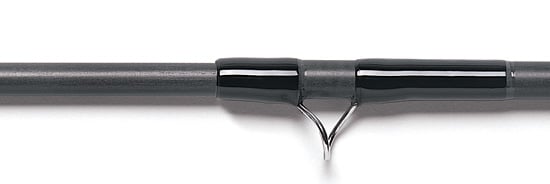Which Fly Rod Ferrule Is Best?
Have a question you want answered? Email it to us at [email protected].
Question: In looking at fly rods, I’ve noticed two main kinds of ferrules—one in which the top section slides over the one below it, and the other where there’s a little tube inserted in the lower section onto which that the top section slides. What are the relative merits of the different kinds of ferrules?
Chris W., Solebury, PA

Answer: The first kind of ferrule—in which one section slides over the tip of the one below it—is called a “sleeve-over ferrule” or a “tip-over-butt ferrule,” and it’s far and away the most common kind. A “spigot ferrule” or “internal ferrule” involves a separate piece that is bonded to the inside of the lower section, producing a protruding tube that the top section slides on. When an internal ferrule is properly seated, there is a 1/8- to 1/2-inch gap between the two sections.
I called my friend Larry Kenney, former owner and rod designer of Scott Fly Rod Co., to get his take on the historical differences between the two designs, and he explained it this way:
In the old days (20 or 30 years ago), before advances in materials and design technologies, the main problem with sleeve-over ferrules was that they didn’t allow a continuous diameter or taper in the blank. The upper section had to flare dramatically to fit over the lower section and still have enough strength to withstand flexing, so there was often a significant difference in rod diameter from one inch below the ferrule to one inch above it. This led to some sloppy rod action and breakage problems. The internal ferrule, on the other hand, while more labor-intensive to build, allowed for a continuous diameter from below the ferrule to above because the upper section didn’t have to fit over the entire diameter of the section below it. With more consistent diameters and tapers, internal-ferrule rods provided smoother action.

A closeup of a “spigot” or “internal” ferrule. Photo courtesy of Scott Fly Rod.
However, the advent of high-tech graphite, new and stronger scrim materials, and modern design methods have allowed rod builders to create much slimmer, more efficient, and smoother sleeve-over ferrules—to the point that there are no longer any significant overall differences between rods constructed with each kind of ferrule.
Scott Fly Rod still makes mostly internal-ferrule rods—although they produce sleeve-over-ferrule models, as well—and Larry’s successor, Jim Bartschi argues that there are applications where internal ferrules perform better.
“Especially in light line weights, the internal ferrule maintains a continuous taper,” he says, “and we can control the stiffness and the mass of the ferrule to match the flex characteristics of the blank.”
He uses sleeve-over ferrules for faster-action rods, where the added material at the ferrule offers some inherent stiffening.
So, for the rod buyer, it’s hard to argue that either kind of ferrule is definitely better. Some anglers prefer the look of internal ferrules because they are sleeker and give a rod a slimmer profile. Others like the simplicity of sleeve-over ferrules, which seat a bit easier and require less care. For instance, Bartschi recommends that internal ferrules be cleaned and waxed periodically to minimize wear.











